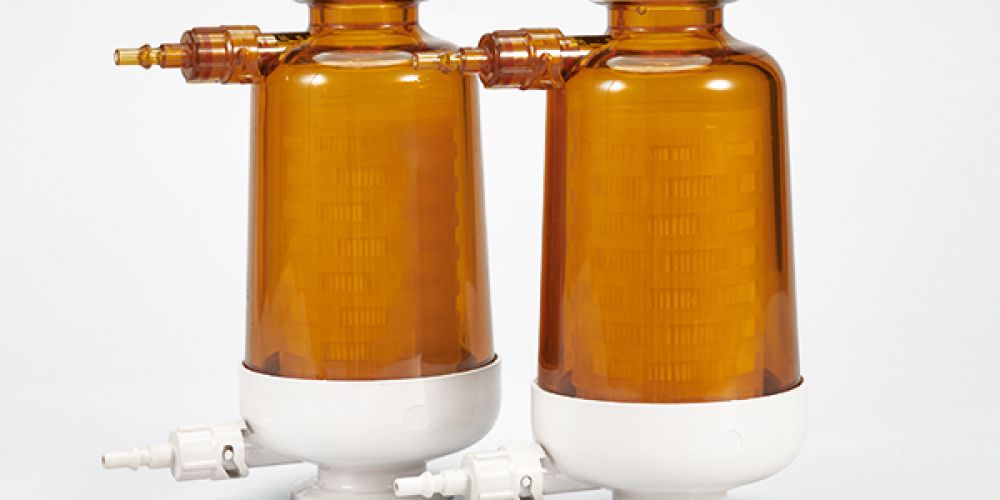
The polyethersulfone membrane capsule filter is a high-performance filtration device, and the thermal bonding solution of its filter element is crucial to ensure the stability and filtration efficiency of the filter. The following is a detailed explanation of the thermal bonding solution of the polyethersulfone membrane capsule filter element:
Thermal bonding technology is a method of combining two or more materials using heat energy. In the manufacture of the filter element of the polyethersulfone membrane capsule filter, thermal bonding technology is used to firmly bond the polyethersulfone membrane with other supporting materials (such as the filter element skeleton) to form a stable filtration structure.
1.Improve filter element stability: Thermal bonding technology can ensure a close bond between the polyethersulfone membrane and the supporting material, thereby improving the overall stability of the filter element. This stability helps prevent the filter element from loosening or breaking due to fluid pressure or vibration during the filtration process.
2.Enhance filtration efficiency: Thermal bonding technology can ensure a gapless connection between the filter medium (such as the polyethersulfone membrane) of the filter element and the supporting structure, thereby avoiding the situation where the fluid bypasses the filter element without being filtered. This helps to improve filtration efficiency and ensure that the filtered fluid reaches the expected purity.
3.Avoid chemical contamination: Compared with some chemical adhesives, thermal bonding technology does not require the use of additional chemicals, thus avoiding potential chemical contamination problems. This is particularly important for applications that require high purity (such as biopharmaceuticals, food processing, etc.).
4.Improve production efficiency: Thermal bonding technology is generally characterized by high efficiency and speed, which can significantly improve the production efficiency of filter elements. This helps to reduce production costs and improve market competitiveness.
1.Material preparation: Select high-quality polyethersulfone membranes and other necessary support materials. These materials need to undergo rigorous screening and testing to ensure that they meet production requirements.
2.Pretreatment: Pretreat the polyethersulfone membrane and support materials, such as cleaning, drying, and necessary surface treatment. This helps to ensure the cleanliness and adhesion of the material surface.
3.Thermal bonding equipment settings: According to production needs, adjust the parameters of the thermal bonding equipment, such as temperature, pressure, and time. The setting of these parameters is crucial to ensure bonding quality and production efficiency.
4.Thermal bonding operation: Place the pretreated polyethersulfone membrane and support material in the heating area of the thermal bonding equipment. During the heating process, the melting point of the polyethersulfone membrane is reached, and the materials begin to soften and fuse with each other. At the same time, by applying appropriate pressure, a tight bond is ensured between the materials.
5.Cooling and shaping: After the thermal bonding is completed, the filter element is cooled and shaped. This step helps to ensure the firmness of the bonding point and the overall stability of the filter element.
The thermal bonding solution of polyethersulfone membrane capsule filter element has a wide range of applications in many fields, including but not limited to:
1.Biopharmaceuticals: used for filtration and purification of biological products such as cell culture media, vaccines, and serum.
2.Food processing: used for filtration and clarification of foods such as beer, wine, and juice.
3.Chemical industry: used for filtration and separation processes of various chemical solutions.
4.Electronic industry: used in the filtration process of electronic chemicals such as photoresists and developers.
The thermal bonding solution of polyethersulfone membrane capsule filter element has significant advantages such as improving filter element stability, enhancing filtration efficiency, avoiding chemical pollution, and improving production efficiency. This solution has broad application prospects in many fields and provides efficient and reliable filtration solutions for related industries.